The Huchuy Qosqo trek is the shortest and easiest of alternative treks to Machu Picchu. The route is situated just north of Cusco and is ideal for visitors who don’t have much time in the region. It is also suitable for those who would like to do a little, non-strenuous hiking.
Most tour companies offer the trek on a two-day schedule with one night of camping. You will spend a night in Aguas Calientes before visiting Machu Picchu on day three of your trek.
This hike is also possible as a full-day trek. It is fairly easy to access, which also makes it a good option for an unguided hike (see more on this below).
In this article, I will provide a brief history of the Huchuy Inca site and describe route options. I will also give you some tips on packing, acclimatization, and weather conditions.
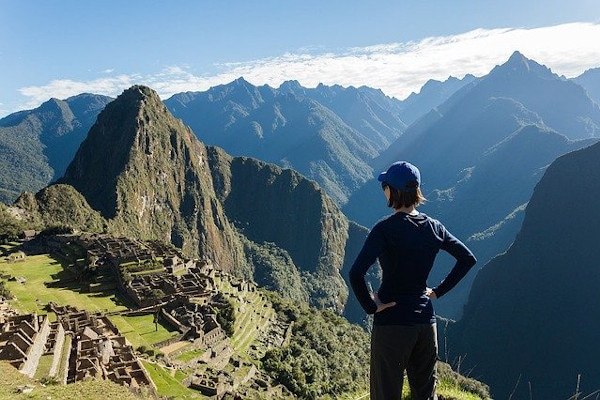
Get a Machu Picchu trek quote
Start planning your Machu Picchu hiking holiday.
Huchuy Qosqo Trek - A Brief Overview
Where Is the Huchuy Qosqo Inca Site?
Huchuyqosqo (pronounced Oh-chee Cusco), means ‘Small Cusco’ or ‘Little Cusco’ in Quechua. It is an Incan archeological site situated at 3,600m (11,811 ft) above sea level.
You will find this site just north of Cusco in Peru. It is above the town of Lamay (2,941m / 9,649 ft) in the Sacred Valley.
The site can only be reached on foot or horseback. There is a dirt road that runs from Lamay to a viewpoint which is about 150m (492 ft) from the ruins. You can get as far as this road by car.
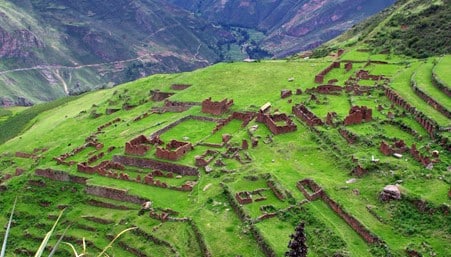
The ruins at Huchuy Qosqo. Note the unique adobe and stonework in the region.
A Brief History of Huchuy Qosqo
Huchuy Qosqo was built during the reign of the eighth Incan Ruler, Viracocha. It is believed to have been a Royal Estate. The site was originally called Kakya Qawani and renamed to Huchuy Qosqo in the 20th century.
Like many Incan ruins in the Cusco region, the site was largely demolished during the 1500s. Today, you can still see the many terraces that surround the site.
There is also evidence of a kallanka (great hall) which would have been 40m (131 ft) long. The irrigation channel is still mostly intact and would have supplied natural spring water to the site in its heyday.
Looking for a day tour? Here are my 5 favourite day tours around Cusco:
- Rainbow Mountain day trip (with meals)
- Moray and Salt Mines Quad Bike Tour
- Sacred Valley day tour
- Humantay Lake day tour
- Machu Picchu and Huayna Picchu entrance tickets
See more Cusco day trips.
Huchuy Qosqo Trek Highlights
The Huchuy Qosqo trail is one of Cusco’s most underrated short hikes. Even in peak tourist season (June-August), less than 50 people visit these ruins each day. This is an amazing opportunity to visit Incan ruins without the crowds.
During the trek, you will get to walk on part of the original Incan pathways. A section of the pathway has been restored as part of the Qhapaq Ñan Project. The ancient Andean Road system comprises around 30,000km (18,641 mi) of Incan pathways and is collectively known as Qhapaq Ñan.
Where to stay? Here are 5 of my favourite accommodation options in Cusco:
- Sonesta Hotel (great 4 star hotel)
- Antigua Casona San Blas
- El Mariscal Cusco (very good value)
- Hotel Paradis (good 3 star hotel)
- Quechua Hostel Recoleta (cheap and cheerful)
See more Cusco accommodation options.
Huchuy Qosqo Trek Difficulty
The Huchuy Qosqo trek is short and sweet - by Peru trekking standards anyway!
The Huchuy Qosqo hike is about 32km (19.69 miles) in total. Tour companies often split this up over two days with a visit to Machu Picchu on the third day.
It is possible to hike Huchuy Qosqo in one day along a 13km / 8-mile route, which takes about 7 hours. In order to hike the Huchuy Qosqo trek, you should be relatively fit and have some solo-hiking experience to attempt this.
See more in our guide on how to train for Machu Picchu to give you a better idea of what to expect on formidable treks like Huchuy Qosqo.
There are also some steep downhill sections that are tough on the knees. Trekking poles will help for these descents. If you don’t have your own, you can rent trekking poles in Cusco.
Something else you need to consider before hiking Huchuy Qosqo is the altitude. A long part of the trek is in high elevations. Make sure you are well acclimatized beforehand (see more on this below).
How Much Does The Huchuy Trek Cost?
Several tour companies offer the Huchuy Trek. You can choose whether you want to do it as a full-day or 3-day excursion.
Below is handy table to give you a better idea of typical Huchuy Qosqo trek costs.
Tour | Description | Cost |
|---|---|---|
Full-Day Huchuy Qosqo Trail | Includes transport, a guide, a packed lunch, and water. Some companies also throw in a pair of trekking poles as a bonus. | $100 per person |
2D/3N Huchuy Qosqo Trek | Includes transport and a tour of Machu Picchu. Prices vary a lot between companies. | $400-$600 per person |
Huchuy Qosqo Trek Itinerary
The Huchuy Qosqo trek itinerary can be divided into two distinct route variations:
- 3D / 2N Huchuy Trek to Machu Picchu
- 1-Day Huchuy Qosqo Trek
Below is our handy route map outlining the major checkpoints and distances covered during the Huchuy Qosqo trek.
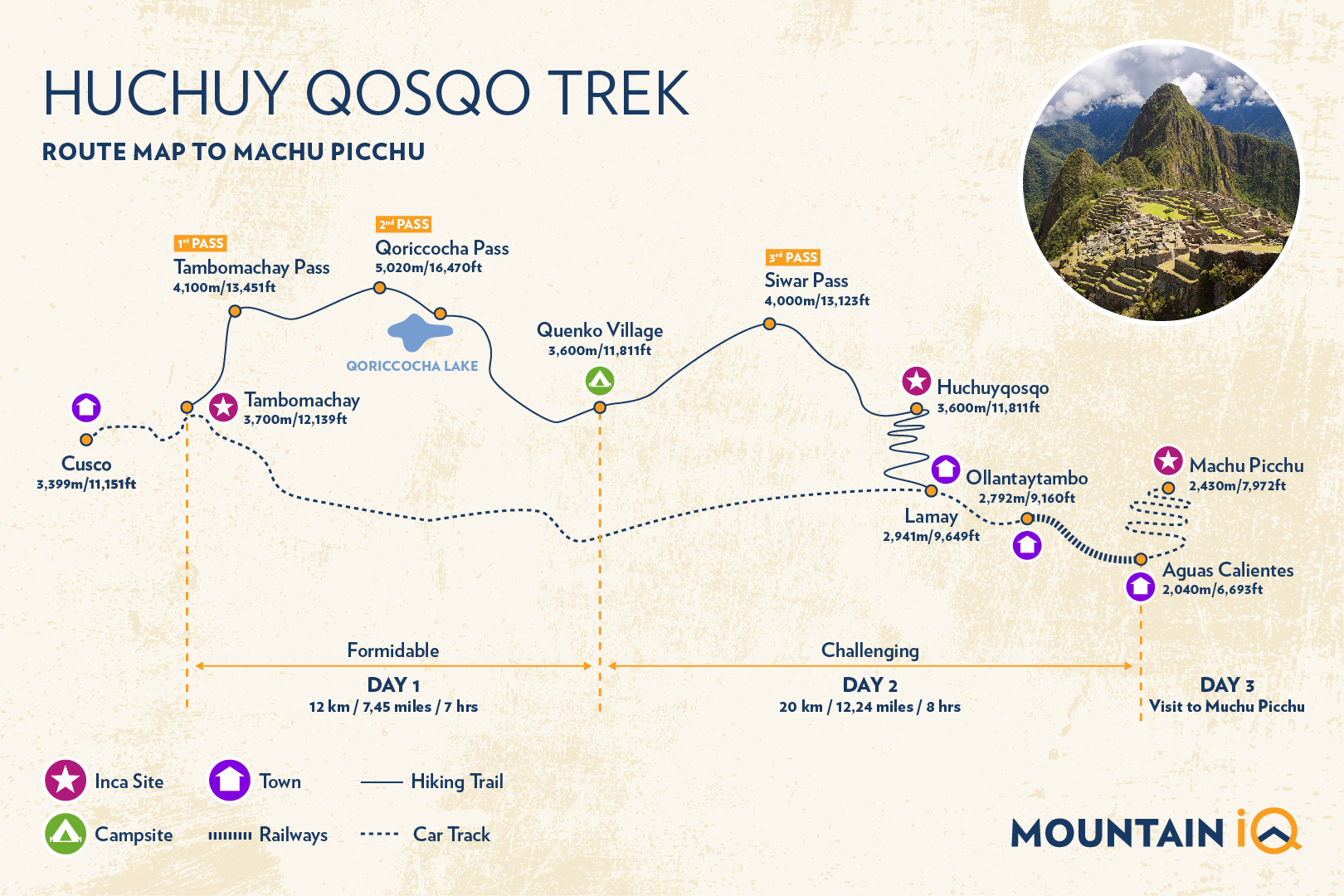
3 Day / 2 Night Huchuy Trek to Machu Picchu
There are a few route itineraries available for the Huchuy Qosqo trek. The itinerary set out here is for a typical 3D/2N trek to Machu Picchu. It starts from the Tambomachay ruins which are just north of Cusco.
Please Note: This itinerary may vary from trekking company to trekking company. For example, some trekking companies start from Chinchero instead of Tambomachay.
Day 1: Cusco – Tambomachy – Pucamarca
You will start the day with an early pickup around 06:00. From there, you will be driven 7km (4.3 mi) north of Cusco (3,399m / 11,151 ft) to an Incan ruin called Tambomachy (3,700m / 12,139 ft). This is the starting point of the Huchuy Qosqo trek.
After a brief visit to these ruins, you will begin trekking up a gradual hill. It gets steeper and tougher as you approach the first pass - Tambomachay Pass (4,100m / 13,451 ft). The views of the Sacred Valley and Cusco city are great from the top of this pass.
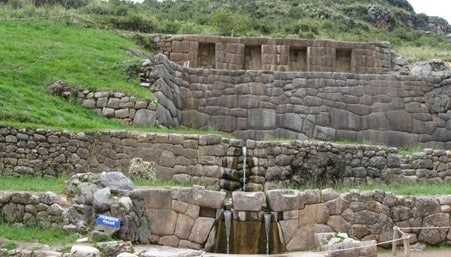
Ruins at Tambomachay
From here, the trail ascends and descends over undulating hills or small passes. The second pass is called Qoriccocha (5,020m / 16,470 ft). Views of the sapphire waters of the Qoriccocha and Piuray lakes along this part of the trail are absolutely stunning.
The trek continues a little further up Qoriccocha and then finally down to Quenko Village (3,600m / 11,058 ft). Most trekkers will camp here for the night.
Interaction with locals is minimal from this point on. You will likely see llamas and alpacas eating Ichu (Andean grass), Puyas (Bromelia bushes), and small cactuses. The scenery in this area is fantastic.
Total trekking distance: ~12km / 7.45 miles (7 hours)
Day 2: Pucamarca – Huchuy Qosqo – Ollantaytambo – Aguas Calientes
The second day is a lot easier than the first day. You will have breakfast relatively early, then head up the third pass - Siwar (4,000m / 13,123 ft) After that, you will head down to the ruins at Huchuyqosqo (3,600m / 11,811 ft). The site takes a good hour to explore. Typically, your trekking guide will give you a tour of the ruins.
After the tour of Huchuyqosqo, some tour companies continue trekking to the village of Tauqaq (sometimes spelled Tauca). Alternatively, you can follow a steep descent to the village of Lamay (2,941m / 9,649 ft), where you will have lunch. From Tauqaq or Lamay, you will be transported to Ollantaytambo (2,792m / 9,160 ft).
Total hiking distance: ~20km / 12.24 miles (8 hours)

The ruins at Huchuy Qosqo. Note the unique adobe and stonework in the region.
If your tour takes you to Tauqaq, you will probably be transported to Moray from there. In Moray, you will get to see the Incan ruins known as “The Greenhouses of the Incas”.
This Incan site consists of terraces carved into a huge bowl. The Incas used this setup to investigate the optimal conditions for growing their crops. After a brief visit, you will continue to Ollantaytambo.
From Ollantaytambo, you will catch a train to Aguas Calientes. This takes approximately 1 hour and 30 minutes. You stay will overnight in a hotel in this town.
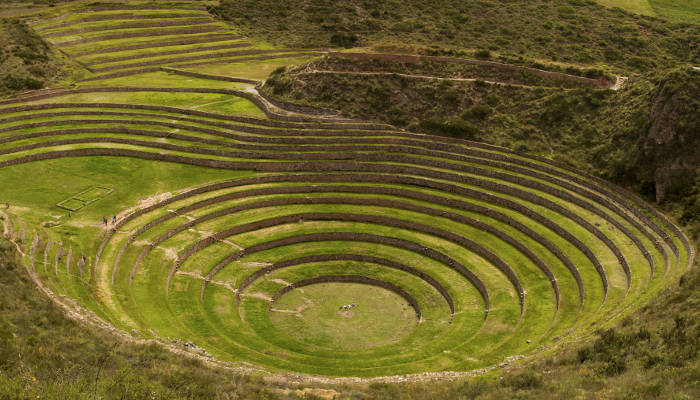
Fascinating Inca ruins at Moray
You may also like:
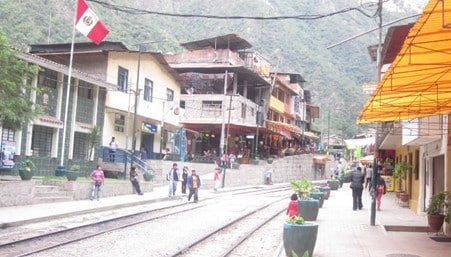
Aguas Calientes, the town below Machu Picchu (often referred to as Machu Picchu town).
Day 3: Aguas Calientes – Machu Picchu – Cusco
After waking early on day three, you will take one of the first buses up to Machu Picchu. The first bus of the day departs around 05:30. During peak season (May-September), queues for buses start forming before 05:00, so try to get there a little earlier.
The bus journey takes about 30 minutes. If you leave early, you will have enough time to trek from Machu Picchu to Inti Punku (the Sun Gate) situated at 2,730m / 8,956 ft. Walk fast to make it there for sunrise.
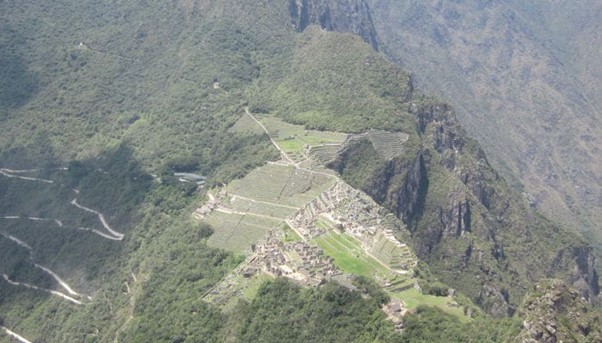
The view of Machu Picchu from Huayna Picchu (aka Wayna Picchu or Wayna Pikchu).
Most tour operators organize a guided tour of the Citadel which usually lasts between 1-2 hours. It is worthwhile organizing a ticket to climb Huayna Picchu, the large mountain behind Machu Picchu, while you’re here. If you are unfit, or afraid of heights, then this is not for you.
Please Note: There are only 400 permits available per day to climb Huayna Picchu, so make sure you book early.
After visiting Machu Picchu, you will need to get a bus back to Aguas Calientes (2,040m / 6,693 ft). From here, the train heads back to Ollantaytambo (2,792m / 9,160 ft).
Usually, train tickets are booked for that afternoon. It takes about 30 minutes to return by bus from Machu Picchu to Aguas Calientes.
It is also possible to walk back to Aguas Calientes from Machu Picchu. Allow at least 1.5 hours to get down the stairs and back to town.
See more in our guide on the best accommodation options in Aguas Calientes.
Please Note: There are often 30-60 minute queues to catch a bus in the afternoon. Factor this in and make sure you give yourself enough time to catch your train.
Huchuy Qosqo 1-Day Trek
Do you have limited time or are you looking to slot in one more hike before you leave Cusco? Huchuy Qosqo Trek can be accomplished in a single day, giving you more than enough time to explore Cusco and the surrounding region.
You will leave Cusco at a reasonable hour (around 7am) and take a short drive to Patabamba (3850m / 12,631 ft). To reach this village, you will pass through the town of Qorao (sometimes Corao) first.
From Patabamba, it is a 15-minute drive to Qoricocha Lake (4050m / 13,287 ft). Your trek begins at the lake.
You will immediately begin the upslope hike to Apachete pass (4 200m / 13,780 ft), which is the toughest part of the day. From the top, it is a much easier, 2-hour walk downhill. From here, most companies stop for a break at Pukamarca. The route passes through beautiful valleys and the Puma Punku Canyon.
The trail leads to Huchuyqosco (Little Cusco). The site is 3, 600m / 11,811ft high, overlooking the Sacred Valley. After a tour of the ruins, you will sit down to enjoy a packed lunch.
After resting and refueling, you will walk the final stretch to Lamay (2,941m / 9,650 ft). Lamay (which is located beside the Urubamba River) is where you will be collected for the drive back to Cusco (3,399m / 11,151 ft).
Total Hiking Distance: 13km / 8 miles (6-7 hours)
See more in our guide on hiking the Salkantay trail solo.

Get a Machu Picchu trek quote
Start planning your Machu Picchu hiking holiday.
Huchuy Qosqo Trek Map
The Huchuy Qosqo trek map below shows the two route variations taken to Huchuy Qosqo.
The most common route departs from the Inca ruins at Tambomachy. This way goes via the village of Pucamarca to Huchuy Qosqo (as set out in the itinerary above).
From here, trekkers continue on to Lamay. A vehicle will take you to Ollantaytambo to catch a train to Aguas Calientes.
The other option is to trek to Tauqaq. From here, trekkers are taken to another Inca site called Moray. After a brief visit, trekkers will be transported to Ollantaytambo.
This second route variation starts at Chinchero and goes via the village of Tauqaq to Huchuy Qosqo.
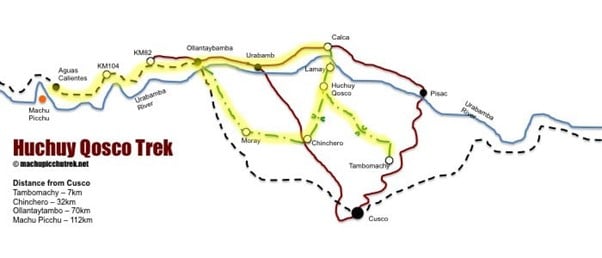
Can you do the Huchuy Qosqo Trek Without A Guide?
If you are fit and have trail experience, it is possible to do the Huchuy Qosqo Trek without a guide. In this case, you may want to do it as a full-day hike. Be sure to leave Cusco before 8 am so that you have enough daylight hours.
If you are hiking on your own, I’d recommend first taking a collectivo from Cusco to Chinchero. If you can not find a direct collectivo to Chincherro, take one headed to Urubamba which should cost 7 soles or less.
Chinchero is a small town with a lot of factories for Alpaca products. From here, you can easily get a cheap taxi (around 20 soles) to a place called Tauca. In Tauca, there are two starting points. Both are well marked by walls that contain some info about the trek. These points are about 100m / 328 ft apart.
Please Note: There may be a way to get directly from Cusco to Tauca. If you know something about it, let us know!
The trail is easy to follow. When you get to the Huchuyqosqo site, you will need to pay an entrance fee. This cost 22 soles before, but prices may have gone up since.
From the ruins, you will continue down the trail to the town of Lamay (approximately 2 hours of walking). Cross the bridge to the center of town to find the colectivo vans. You may need to catch a colectivo to Pisac first and then to Cusco.
Please Note: This is not the hike to take on if it has been raining a lot. The trails get muddy and slippery, which is dangerous. You would have to walk slowly in these conditions and probably wouldn’t make it back before dark.
Best Time To Do The Huchuy Qosqo Trek
There are two main weather seasons in this part of the Peruvian Andes:
- A dry season that runs from May through to September.
- A wet season that starts in October and runs through to April.
Overall, the best time for a Huchuy Qosqo trek is during the dry season (May-September).
You can trek to Huchuy Qosqo all year round. I recommend avoiding January and February though, which are the wettest months.
The dry shoulder months of March / April and October / November are pleasant. Be aware that there is a higher probability of encountering rain during these months.
Temperatures throughout the year are relatively consistent. The days are warm, reaching temperatures of 20°C (68°F) and higher. The nights and early mornings are cold, sometimes reaching below 0°C (32°F). Layered clothing is a must (see our packing list below).
You may also like:
Please Note: May through September is the peak trekking season. However, Huchuy Qosqo trek is one of the least popular routes. You are unlikely to encounter many trekkers on the trail during this time of year. Machu Picchu, on the other hand, will be busy.
Micro-climates dominate in the Andes. This means weather conditions can change quickly and rain is possible all year round. So, make sure you bring wet weather gear (like a poncho) even in the dry season.
You should book your train tickets to Aguas Calientes and entrance tickets to the Citadel as soon as possible. These tickets are usually included in your tour package.
See more in our guide on how to get to Machu Picchu.
Looking for a day tour? Here are my 5 favourite day tours around Cusco:
- Rainbow Mountain day trip (with meals)
- Moray and Salt Mines Quad Bike Tour
- Sacred Valley day tour
- Humantay Lake day tour
- Machu Picchu and Huayna Picchu entrance tickets
See more Cusco day trips.
Acclimatisation For the Huchuy Trek
Although the Huchuy Qosqo trek has a reputation of being easy, it still requires trekking to high altitudes that are well over 4,000m / 13,123 ft. This comes with obvious altitude sickness risks too.
I recommend you take a moment to read our guidance on acclimatization and altitude sickness. It’s good to be well informed of the risks associated with high-altitude trekking. This way, you can prepare and hopefully minimise the adverse effects of altitude sickness.
Below is our handy altitude profile on Huchuy Qosqo to give you a better idea of what elevation to expect during your trek.
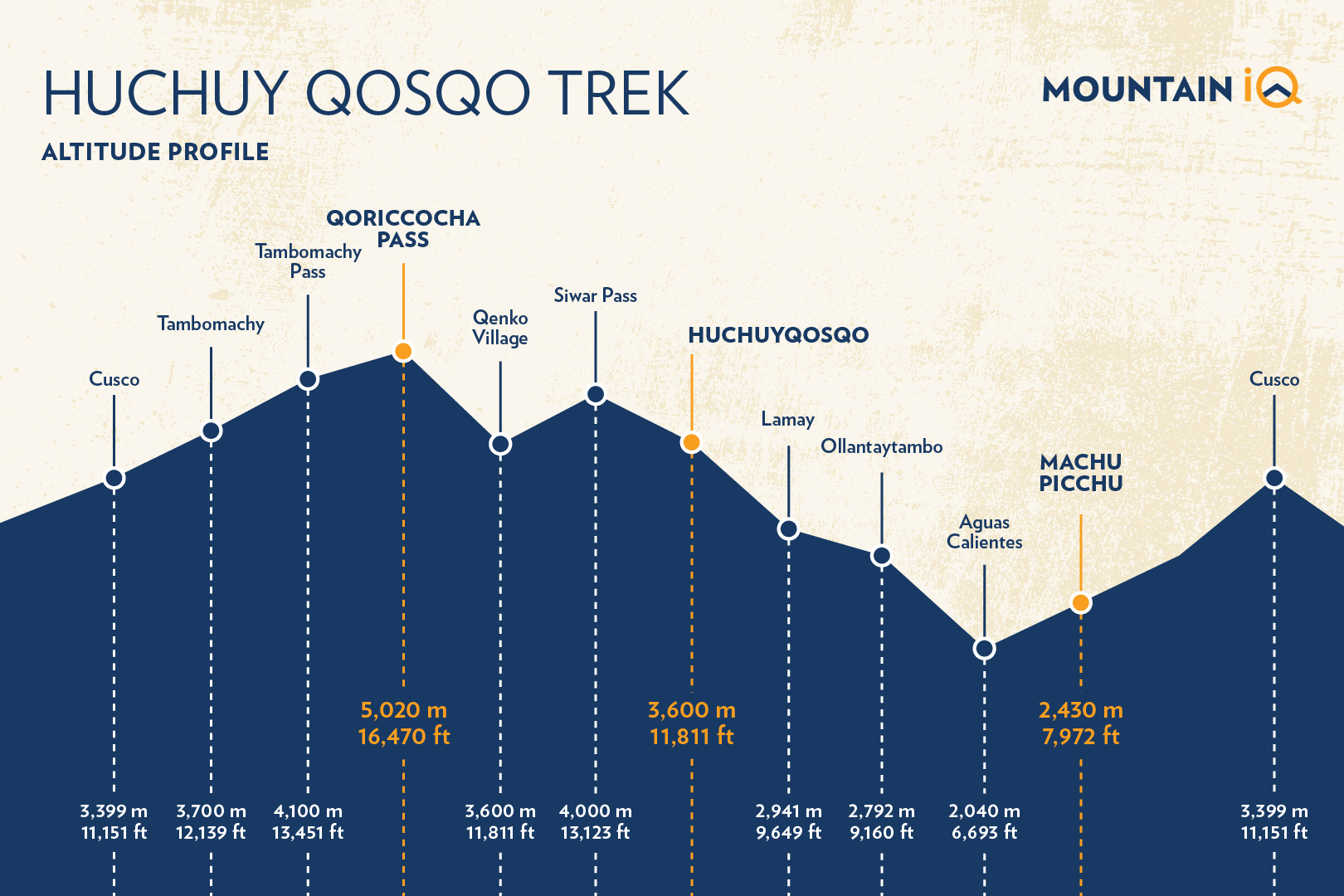
Huchuy Qosqo Trek Packing List
Whether you are trekking for 5-days or 2-days, you require fundamental gear. This includes basic trekking clothes, hiking boots, walking poles, a daypack, and a sleeping bag.
We have written a detailed packing list for the Inca Trail which you can use as a template for the Huchuy Qosqo trek. However, as the trek is shorter, you will not need as many changes of clothing as you normally would for the Inca Trail. For the Huchuy Qosqo Trek, you will need the following:
- 2-3 pairs of socks
- 2-3 shirts
- 1 pair of pants
It is not worth buying a sleeping bag for the Huchuy Qosqo trek. Since you will only camp for one night, it is more economical to rent one.
If you are doing Huchuy Qosqo as a standalone day trip, you only need a day pack. You should definitely also carry:
- Sunscreen
- A weatherproof jacket
- Snacks
I suggest taking at least 1.5 litres (per person) of water for the day. If you have a filter bottle, you can refill it from streams along the route.
See our guide to hiking boots for the Inca Trail.
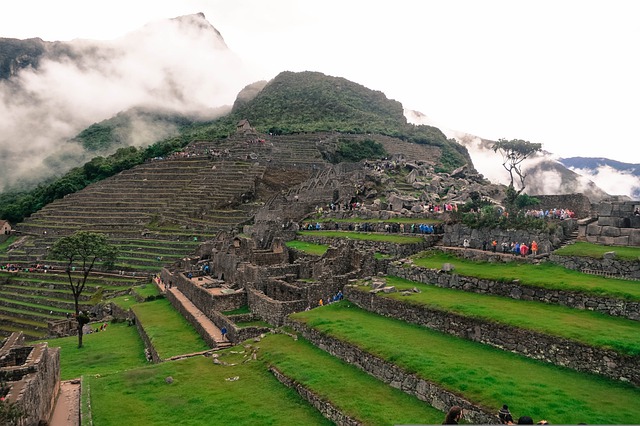
Other Route Options
Want to do more exploring through Peru? Here are some of my favourite Machu Picchu trails:
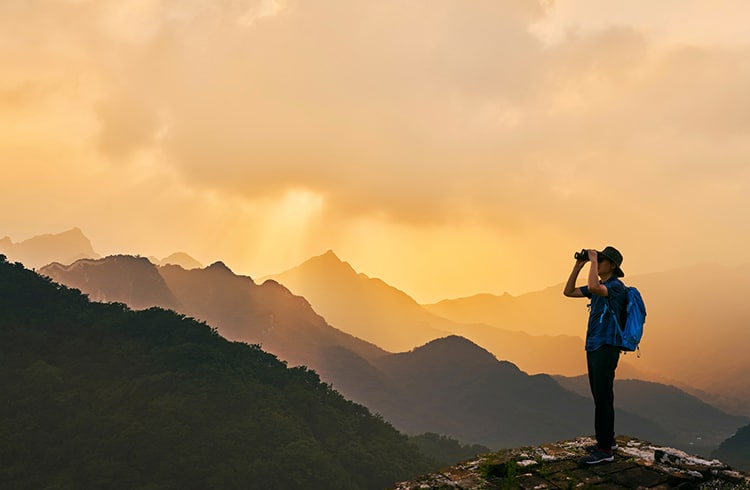
Trekking Insurance
Insurance for your trek to Machu Picchu is a must. Most operators will require you to carry sufficient travel insurance for your trek.
Most trails to Machu Picchu go over high 4,000m / 13,123 ft passes. You will need to make sure your insurance covers you for high-altitude hiking (up to 6,000m / 19,685 ft). I have reviewed several reputable travel insurance providers and the most affordable and best by far is Rise & Shield.

Get a Machu Picchu trek quote
Start planning your Machu Picchu hiking holiday.
Conclusion
If you still have any questions about the Huchuy Qosqo hike, feel free to leave a comment below. We will respond within 24 hours. We would also love to hear from you if you want to share your knowledge or experience of this trek.
Tags: Huchuy Qosqo Trek, Huchuy Qosqo Hike, Huchuy Qosqo
References: (1) Wikipedia, (2) Inca Trail Trailblazer Guide, (3) 'Exploring Cusco (6th edition)' by Peter Frost, (4) Depth interviews with local guides, (5) Personal experience
